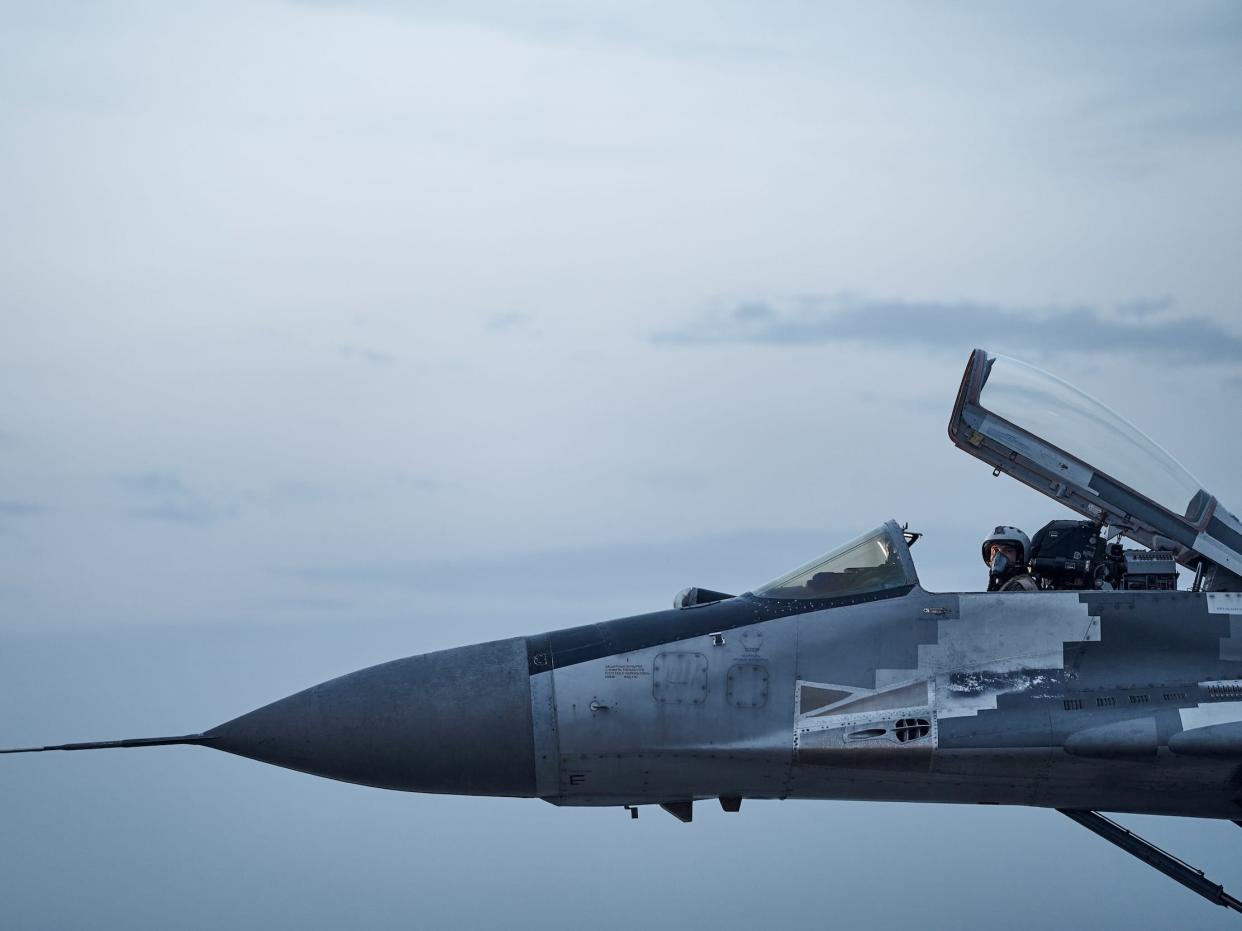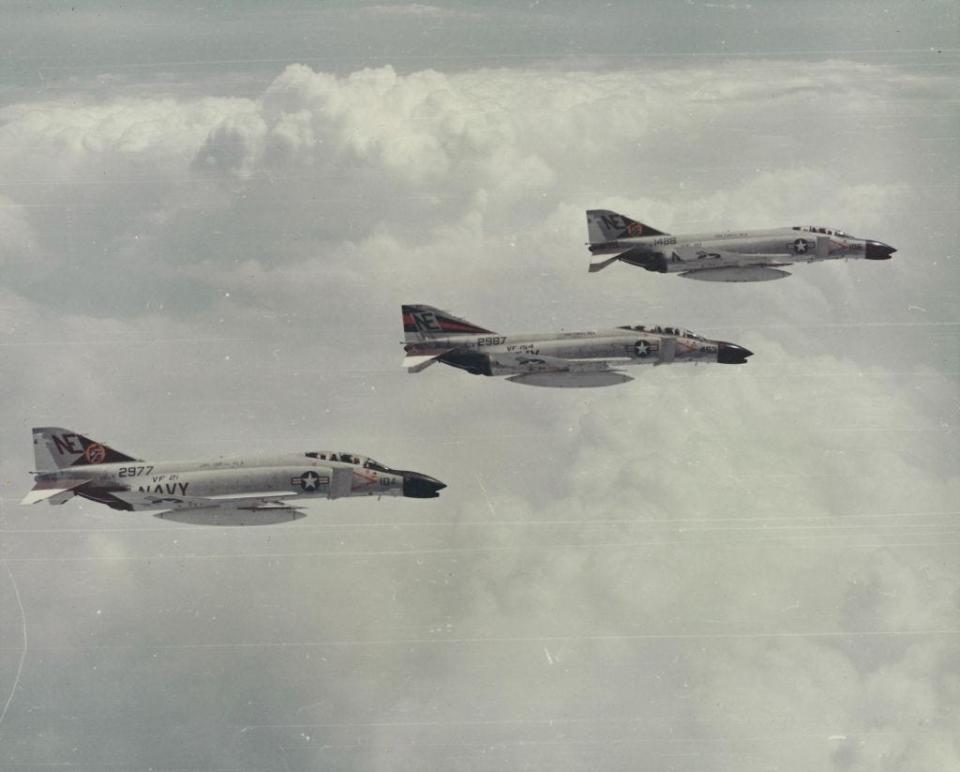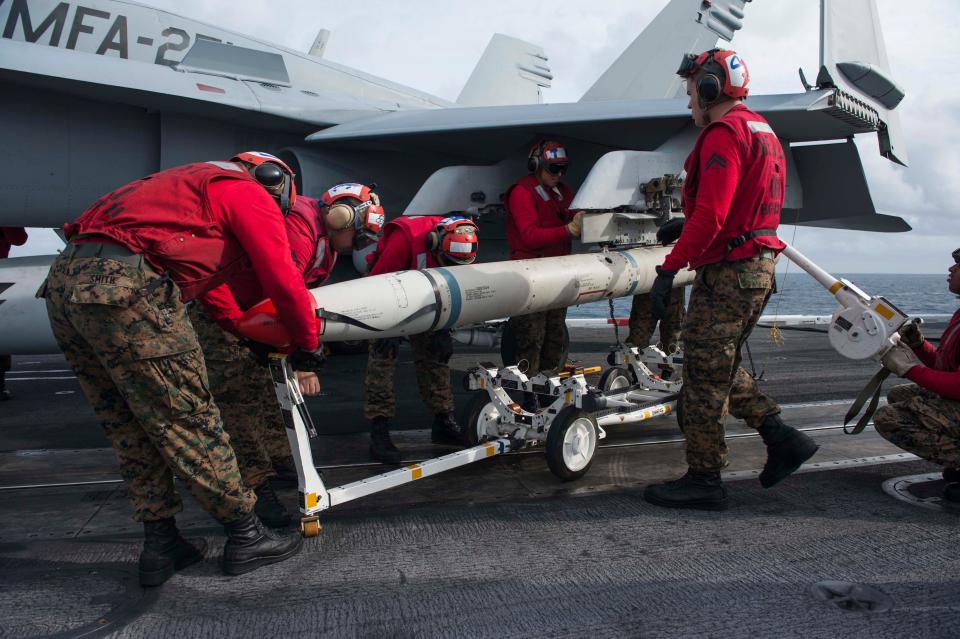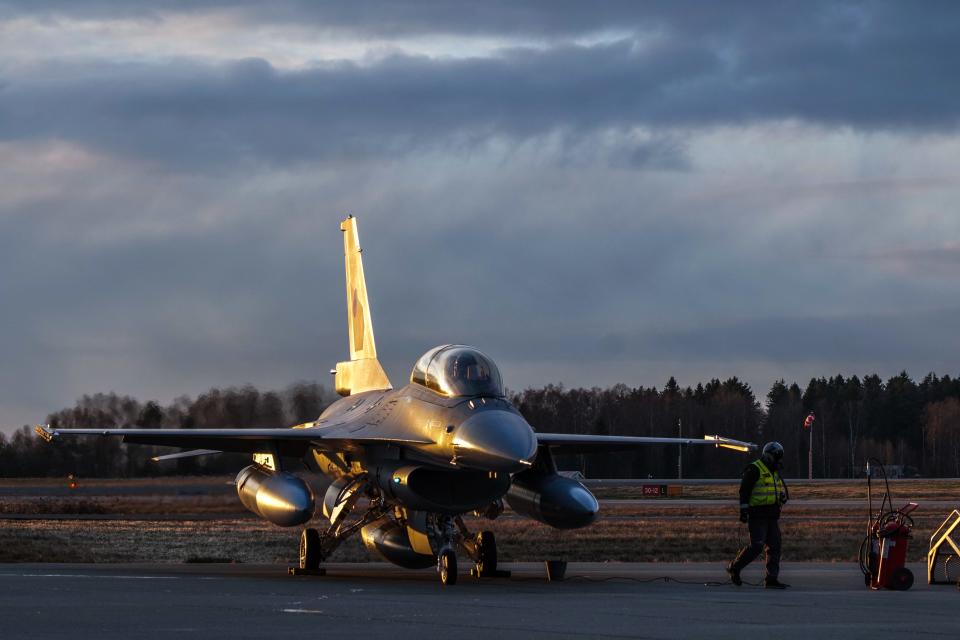Ukraine's pilots are flying high-risk 'wild-weasel' missions first developed in the Vietnam War by the US Air Force, defense analyst says

Ukrainian pilots fly dangerous "wild-weasel" missions to suppress Russian air defenses.
Advanced US-supplied missiles have played a critical role in these missions.
The arrival of F-16 fighter jets will help level out Russia's air superiority.
Pilots in Ukraine's air force, which is a fraction of the size of Russia's, are using a tactic first deployed by the Vietnam-era US Air Force to contest the skies above the 600-mile frontline.
In recent months, videos have emerged that appear to show Ukrainian pilots conducting so-called "wild-weasel" missions.
The strategy involves jet pilots luring enemy antiaircraft defenses into targeting them with their radars. The radar waves are then traced back to their source and the Ukrainian pilots retaliate with weapons like the US-made AGM-88 high-speed anti-radiation missiles, or HARMs, before the Russians can lock onto them with their surface-to-air missiles, or SAMs.
Eastern Ukraine, a Ukrainian Air Force MiG-29 Wild Weasel fires off an AGM-88 HARM towards a Russian radar. pic.twitter.com/5MGYcfaRmt
— OSINTtechnical (@Osinttechnical) March 15, 2024
The US has supplied Ukraine with HARMs since 2022, which have provided Ukrainian pilots with suppression of enemy air defenses, or SEAD, and destruction of enemy air defenses, or DEAD, capabilities.
New footage showing an early Ukrainian SEAD mission using US-supplied and integrated AGM-88 HARMs.
UkrAF Su-27 Flankers would fly at near treetop level behind the front before launching off their HARMs.
(Summer ‘22) pic.twitter.com/IOeu7hzUxW— OSINTtechnical (@Osinttechnical) February 8, 2024
The US Air Force pioneered SEAD tactics in the Vietnam War. So-called wild-weasel aircraft were tasked with destroying enemy air-defense radars to clear the way for attack aircraft to fly through.
The wild weasels had radar receivers to locate enemy air defenses; they were armed initially with bombs and later with special missiles that could target radar.
The term "wild weasel" originated from Project Wild Weasel, a US Air Force anti-SAM strategy that used direct attacks to suppress enemy air defenses, according to the National Museum of the US Air Force.

These missions, originally called "Project Ferret" — a reference to the small predatory mammal that enters its prey's den to kill it — were renamed Project Wild Weasel to not be confused with the code name "Ferret" that was used during World War II for radar countermeasures bombers.
HARM is the latest of these air-to-surface missiles: a projectile of about 770 pounds, with a range of around 90 miles. These missiles can locate and strike enemy radar even after the radar systems have been turned off.
HARM has been used in wars in Libya, Iraq, and former Yugoslavia, The Economist previously reported.

This experience is being put to use in Ukraine.
"Ukraine clearly is learning from Western military thought," Frederik Mertens, a strategic analyst at the Hague Centre for Strategic Studies, told Business Insider. "Ukraine is putting great emphasis on SEAD and DEAD missions."
These missions can be "very dangerous," he said, especially for wild weasels. But the Russian air defenses are a "key target."
"This game is worth the candle," Mertens said.
He added that Ukraine's tactics "go far beyond the classic wild-weasel missions of anti-radiation missile-equipped aircraft."
From special-forces raids to land-launched missiles, "Ukrainians use all weapons, troops, and systems they have at their disposal to suppress and destroy Russian air defenses," Mertens said.
Adapting Western weapons for use in Ukraine
HARM can be difficult for Ukraine to adopt because its old Soviet-era jets, such as the MIG-29 and the Su-27 fighters, are often incompatible with modern war technology.
Last month, William LaPlante, the US under secretary of defense for acquisition and sustainment, told reporters at a Washington, DC, conference that Ukraine had been using iPads in an attempt to make Ukrainian jets compatible with Western weapons.
He said that Ukraine's aging fighter planes could now take many Western weapons and get them to work on their aircraft because they were "basically controlled by an iPad by the pilot. They're flying it in conflict like a week after we get it to him," he said.
Ukrainian Air Force Su-27 Flanker Wild Weasel operations, seen here conducting multiple low level standoff strikes against Russian radars with US-supplied AGM-88 HARMs. pic.twitter.com/7CosjXFNkO
— OSINTtechnical (@Osinttechnical) April 21, 2024
Since making the necessary adaptations, Ukrainian pilots have fired hundreds of HARMs at Russian air-defense radar systems. But Justin Bronk, a senior research fellow for airpower and technology at the Royal United Services Institute, told BI that its technique has changed.
"While they initially achieved a number of successful kills against Russian SAM systems and radars when first introduced, Russian SAM operators quickly adapted their tactics," Bronk said.
Now, HARM launches serve "a suppressive rather than a destructive purpose."
When launched, "the missiles force Russian SAM operators to turn off their radars and relocate to avoid being hit by them," he said. "This leaves a short window within which other strike systems like HIMARS rockets or Storm Shadow missiles can get through to nearby targets with much less risk of being intercepted by the Russian SAMs."
Awaiting F-16s
While modified Soviet-era fighter jets allow the Ukrainian military to use HARM missiles, the modifications mean it can't take full advantage of their features.
"It doesn't have all the capabilities that it would on an F-16," Gen. James Hecker, a commander of United States Air Forces in Europe, said previously during a roundtable at the Air Force Association's Air, Space & Cyber conference.
The delivery of F-16s will be crucial for increasing Ukrainian air control.

Earlier this week, Kajsa Ollongren, the Netherlands' defense minister, said during a press briefing in Vilnius, Lithuania, it would start delivering its F-16 fighter jets to Ukraine this fall.
Denmark previously said it would begin transferring its aircraft in the summer.
"Dealing with Russian GBAD will be crucial to enable future Ukrainian air strikes once the F-16 fighters arrive," Mertens told BI, referring to Russia's ground-based air defense.
While the delivery of such a small number of F-16s should not be overestimated, Mertens believes they could significantly impact Crimea.
"Crimea is vulnerable. The Russians have relatively limited maneuver space on the peninsula, resupply is dependent on the Kerch bridge, and here Putin has a lot to lose both politically and militarily," he said.
"If a limited number of fighters can have a real impact, it is here."
Read the original article on Business Insider

